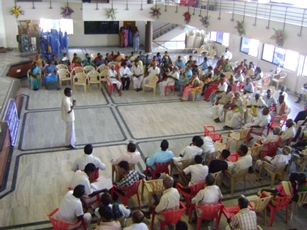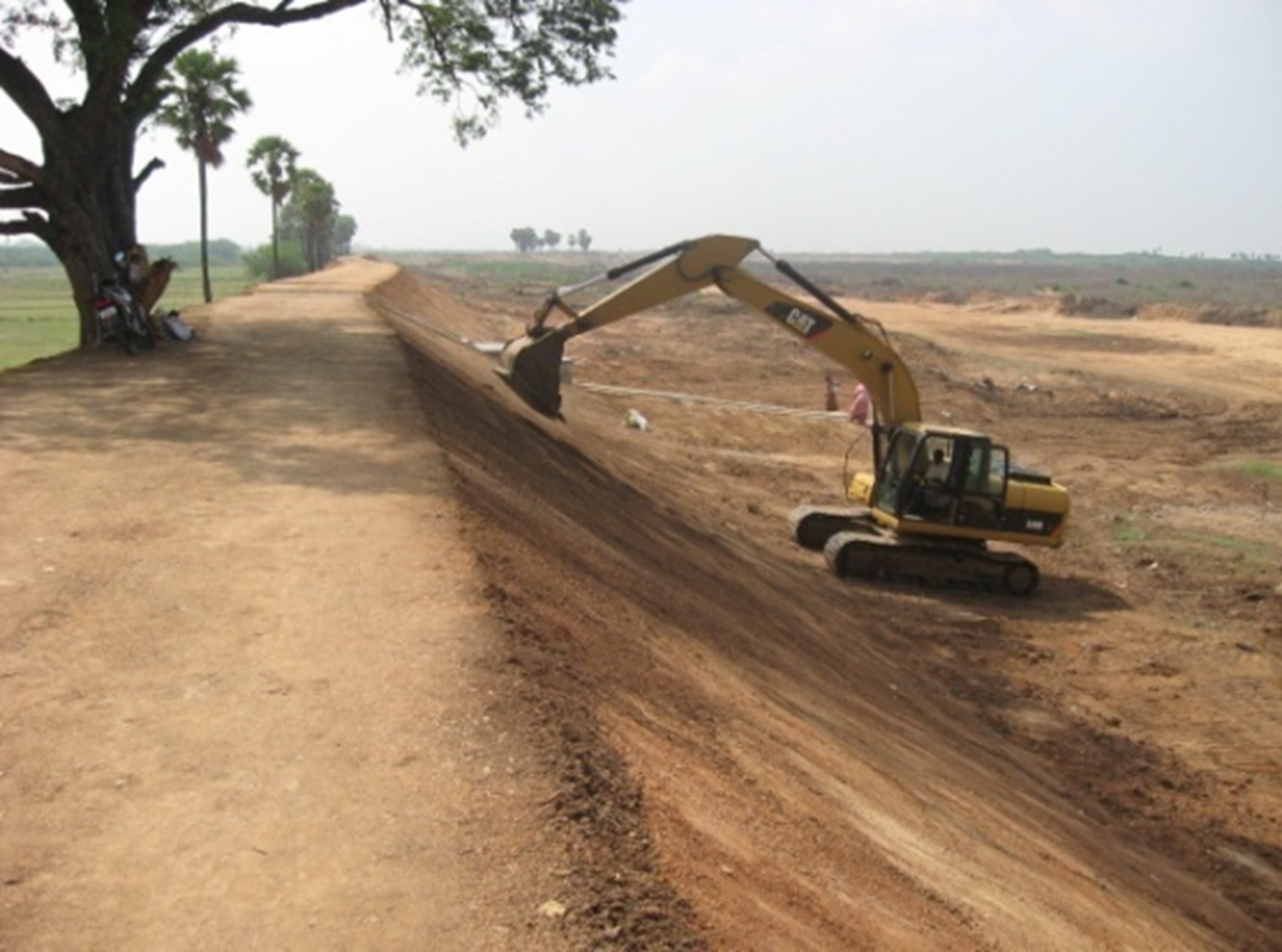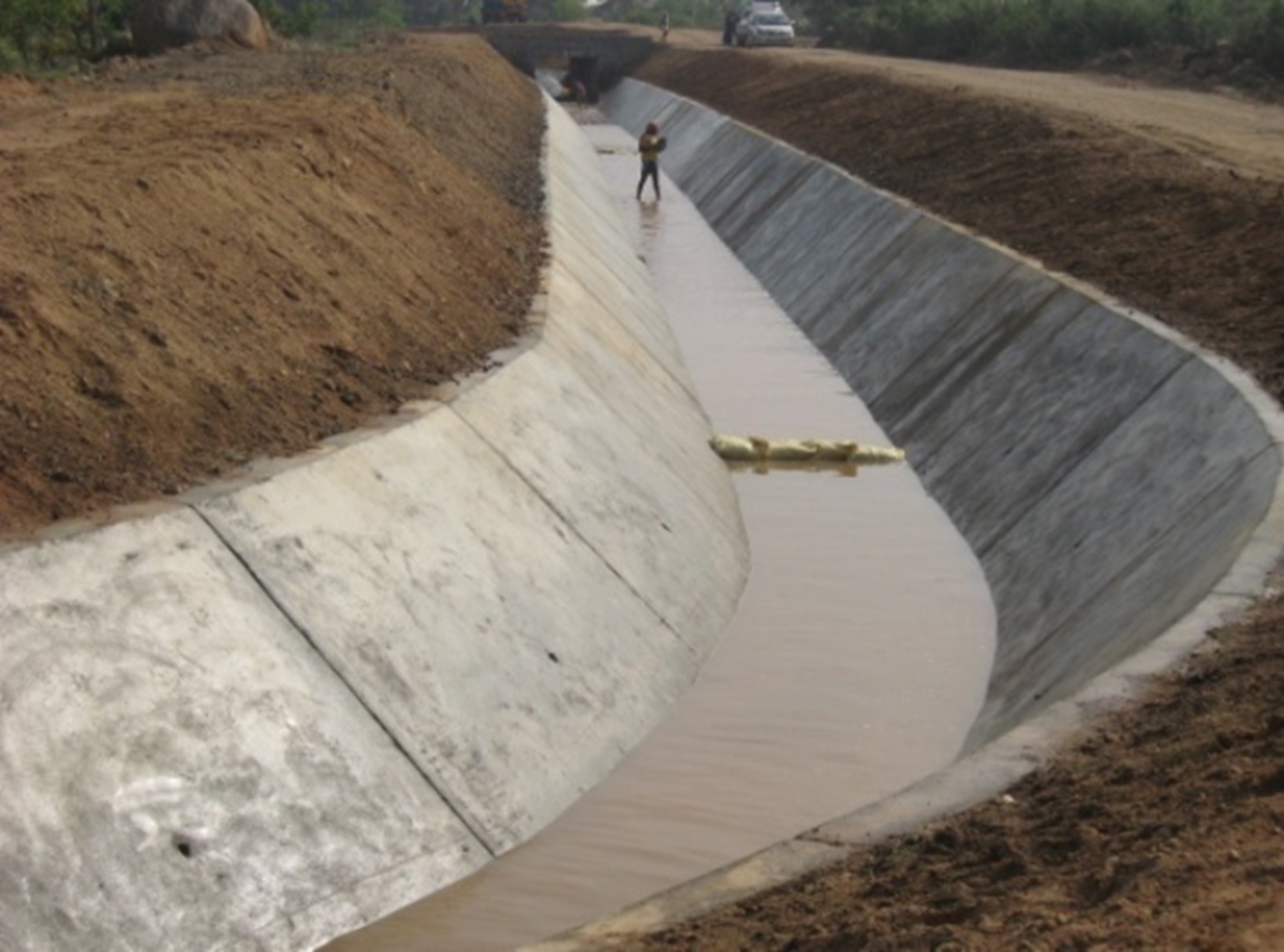Objective:
The Objective of Water Resource Department is to improve irrigation and water management, covering both supply and demand aspects. It consists of four inter-related sub-components:
- Institutional strengthening and capacity building for water management
- Irrigation systems modernization
- Participatory irrigation management and
- Convergence for improved service delivery
I. Institutional strengthening and capacity building for water management
This component aims to assist the Government of Tamilnadu in addressing the need for
- An integrated water resources planning, decision making and management in a sub basin context
- An enhancing knowledge base and
- An improving sustainability of water sector assets
This will be achieved by strengthening Water Resources Department (WRD) and related agencies for water resources management, including the State Water Resources Management Agency (SWaRMA), Institute for Water Studies (IWS) and State Ground Water and Surface Water Data Center (SG&SWRDC).
1. Strengthening of Water Resources Department (WRD)
The project will enhance technical capabilities of WRD,  including the design capabilities and implementation of enterprise information management system (EIMS) within WRD. This sub-component focuses on institutional strengthening and capacity building of various organizations associated with Water Resources Department (WRD) with a view to strengthen the state's capacity for multi-sectoral planning, development and sustainable management of water resources. The design of this component recognizes the fact that the institutional strengthening and capacity building of any institution is a continuous process, and should be supported to enable the institution to carry out its mandated functions in an efficient and effective manner.
including the design capabilities and implementation of enterprise information management system (EIMS) within WRD. This sub-component focuses on institutional strengthening and capacity building of various organizations associated with Water Resources Department (WRD) with a view to strengthen the state's capacity for multi-sectoral planning, development and sustainable management of water resources. The design of this component recognizes the fact that the institutional strengthening and capacity building of any institution is a continuous process, and should be supported to enable the institution to carry out its mandated functions in an efficient and effective manner.
2. Operation and Maintenance (O and M) by WRD and Water User Association (WUA)
O&M of irrigation infrastructure till the sluice is the responsibility of the WRD while O& M of distribution systems after the sluice is the responsibility of the WUAs. The project will improve the information and analytical tools and capacity for system operation through improved system monitoring, use of forecasting information as supported by the National Hydrology Project and other activities, and tools to enhance decision support as well as improved maintenance, including improved budgeting in the EIMS.
3. Strengthening State Ground and Surface Water Resource Data Centre (SG&SWRDC)
The project will enhance capacity of the State Ground and Surface Water Resource Data Centre in maintaining data base for ground and surface water quantity and quality, the project will support technical interventions hitherto not being proposed in the department under any other program like the assessment of artificial recharge wells constructed under IAMWARM and pilot Runoff models.
4. Strengthening Institute for Water Studies (IWS)
The project will assist IWS and other wings in producing quality project related outputs not restricted to
- Analyzing meteorological, hydrological, socio economic and surface & ground water data and creation of river basin-wise database
- Decision Making (DSS) and design inputs
- Assessing present and future sectoral water demand and availability
- Preparing river basin master plans
- Applying remote sensing and GIS technologies for water resources planning
- Preparing background documents related to state water policies
5. Strengthening State Water Resource Management Agency (SWaRMA)
To enhance the state water policy objectives through state level institutions for multisectoral planning allocation and manage the state's water resources in a river basin framework, the project will support mainstreaming SWaRMA into the regular structure of the Government of Tamilnadu and further strengthen its activities.
6. Strengthening Tamil Nadu Irrigation Management Training Institute
The project will also support strengthening of Irrigation Management Training Institute(IMTI) based in Tiruchirapalli for organizing needs-based training for staff of WRD, agriculture and related departments, farmers and WUAs in areas of irrigation systems, PIM, crop productivity and crop diversification.
II. Irrigation System Modernisation
Modernization at tank level and in command area
This sub-component will modernize irrigation infrastructures, including tanks, anicuts and irrigation canals. The modernization of irrigation infrastructure will focus on improving the irrigation systems through rehabilitation and modernization of about 4,800 tanks, and 477 anicuts and improving water use efficiency at farm level covering about 5,43,000 ha of land in 66 sub-basins out of 127 sub-basins. Activities under this sub-component will be carried out based on individual sub-basin Detailed Project Report (DPRs) and development plans specifically developed and tailored to local conditions, and will aim to revive traditional water bodies (tanks) including supply channels improvement, sluice and weir repairs, and bund strengthening by partially borrowing suitable soils from the tank.


On Farm Development (OFD) Work
The main aim of the OFD works is to improve irrigation water delivery to farmers, to the tail end of the distribution system by empowering WUA farmer members to directly participate in executing works. The works will be carried out either through WRD or by the qualified WUAs under Direct Contracting arrangements. A majority of the work that will be executed by OFD contract is at the entry point, where a WUAs responsibility with in an irrigation system in their command area begins and the WRD jurisdiction ends for operational maintenance of the tank system.
III. Participatory Irrigation Management (PIM)
Building on the achievements of IAMWARM, the project will work with the WUAs to strengthen the decentralized irrigation service delivery by improving farmer's participation in irrigation management focusing on operations, water management and minor maintenance. The project will finance equipment, expert consultants, consultancies, training and operating cost in order to support:
- Mainstreaming of PIM approach within WRD
- Establishing new 3200 WUAs under TNIAMP and strengthening their capacities.
IV. Convergence of Improved Service Delivery
For efficient and effective service delivery to farmers in the project, interventions of eight participating line departments and agencies will converge not only at the top level, but also at the grassroots level. The departments involved in the water sector need to collaborate for effective service delivery to farmers. Model villages will be established in each sub basin for focusing convergence of 8 Departments on Project Interventions and Other Government schemes in operation for the benefit of the farmers. This convergence for service delivery will be promoted through establishing and strengthening 'Single Window Information and Knowledge Centers' (SWIKCs), and facilitating 'Community Collaborative Water Management (CCWM) at village level'.
Model Villages
Formation of Model Villages:
Identifying and forming the Model Villages through 'Entry Point Activities' taking into consideration the presence of multi -departmental interventions under the project and which requires convergence for effective service delivery to the farmers. The Model villages are identified and selected in a phased manner (250 Villages/Phase) as and when the new WUAs are formed. The interventions of multiple departments are essential in order to take up 'Community Collaborative Water Management'. For this, the interventions of WRD who are the provider of water and the consumer of water viz., Agricultural Departments' interventions are very much essential. The scope of the agriculture and related departmental interventions vary as per the field conditions of the village. Similarly the livelihood departments including the Animal husbandry and the Fisheries will implement their interventions in these model villages subject to field conditions. The targeted farmers in these model villages will be the water users of WUAs. The total target of farmers will be the entire water users of 3200 WUAs. Since the formation of WUAs will take place in a phased manner during 2018 to 2021, the interventions of the line departments will be after the formation of WUAs.
Establishment of SWIKC:
In the selected model villages, a place for convergence of officials and the community need to be identified and established which will function as 'Single Window Information and Knowledge Centre (SWIKC).The SWIKC building will be on rental basis and the rent will be paid from the project. The names of the model villages cannot be identified at the first instance, as the identification and selection of model villages are possible only after the 'Entry Level' Activities' have been completed. Similarly the total target numbers of farmers are also based on the number of WUAs (General Body Members)
Implementation of Community Collaborative Water management (CCWM):
CCWM will sensitize the community about the water situation in their local village and enable them to draw up a community level plan for optimum use of water and equitable distribution of water in their villages for all water users. The Competent Authorities (AES/JES) of WRD will be in charge of the above trainings. CEC will provide the requisite skills both for the community and to the WRD.
Steps to Implement CCWM:
Step i: 'Awareness Creation' about Water Resources, the need for optimum use of water in the village, equitable distribution of water and thereby water conservation of water.
Step ii: 'Conducting 'Water walk' with the cross-section of the people in the village with the active participation of all the people to assess the conditions of the water bodies including drinking water distribution system, taking in to their ideas, observations priorities etc., for sensitizing the community on the prevailing situation in the water scenario of the village and to chalk out water management strategies with their involvement
Step iii: Conducting Participatory Rural Appraisal (PRA)
Step iv: Development of Village Vision.
Step v: Water Budgeting- Assessment of water resources available in the village and the demand for various sectoral uses to assess status of the water balance .This is done by the community themselves by demystification of Science.
Step vi: Development of Decision Supporting System' to suggest various cropping patterns and to assist in decision making by the community in choosing the suitable cropping pattern for the season based on water balance.
Step vii: Implementation of the finalized cropping pattern as the 'Operation Plan for that season.
Step viii: Training of 'Community Change Management Group (CCMG) for the sustainability of the process. CCWM will be implemented in all the model villages.
Step ix: Capacity Building on CCWM, Convergence, Team Building, line departments' interventions based trainings will be given to both officials and the community


 including the design capabilities and implementation of enterprise information management system (EIMS) within WRD. This sub-component focuses on institutional strengthening and capacity building of various organizations associated with Water Resources Department (WRD) with a view to strengthen the state's capacity for multi-sectoral planning, development and sustainable management of water resources. The design of this component recognizes the fact that the institutional strengthening and capacity building of any institution is a continuous process, and should be supported to enable the institution to carry out its mandated functions in an efficient and effective manner.
including the design capabilities and implementation of enterprise information management system (EIMS) within WRD. This sub-component focuses on institutional strengthening and capacity building of various organizations associated with Water Resources Department (WRD) with a view to strengthen the state's capacity for multi-sectoral planning, development and sustainable management of water resources. The design of this component recognizes the fact that the institutional strengthening and capacity building of any institution is a continuous process, and should be supported to enable the institution to carry out its mandated functions in an efficient and effective manner.
